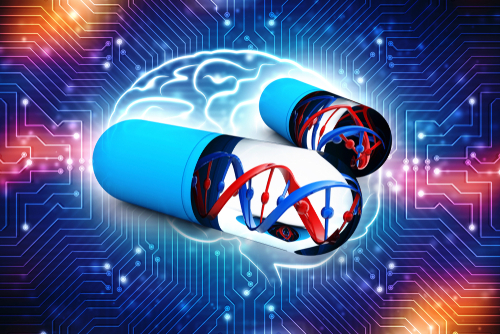Gene Therapy Shows Promise for AADC Deficiency But Requires Early Diagnosis, Study Says
Written by |

Early clinical trials of a gene therapy for aromatic amino acid decarboxylase (AADC) deficiency have yielded encouraging results for its safety and efficacy, a study highlights.
But researchers call attention to the importance of a timely diagnosis for treatment success, as only early interventions could fully prevent long-term brain damage and other outcomes.
Their study, “Aromatic amino acid decarboxylase deficiency: Molecular and metabolic basis and therapeutic outlook,” provides an overview of the recent research on AADC deficiency, with a focus on the promising avenues and prospects emerging for its diagnosis and treatment, particularly in gene therapy. The study was published in the journal Molecular Genetics and Metabolism.
AADC deficiency is a rare genetic disorder caused by mutations in the dopa decarboxylase (DDC) gene. This gene provides instructions for making AADC, a key enzyme for the production of neurotransmitters — chemical signals that allow nerve cells to communicate with each other.
People with AADC deficiency produce fewer neurotransmitters, especially dopamine and serotonin, which prevents their nervous system from working properly. Patients typically experience developmental delays, movement disorders, muscle weakness, as well as problems in controlling blood pressure, heart rate, and body temperature. Symptoms vary extensively and normally begin in the first months of life.
Diagnosis is difficult and may be delayed for several years. It can be made by a spinal tap to measure metabolites (substances formed during metabolism) related to low levels of dopamine and serotonin. A blood test also can measure the activity of the AADC enzyme in plasma, and genetic testing may be used to confirm diagnosis.
New metabolomics techniques — which enable the analysis of multiple metabolites simultaneously — have shown promise in providing early diagnosis. One potential approach detects a dopamine-related metabolite (3-O-methyl-dopa) in serum or dried blood spots.
In AADC deficiency, a total of 82 disease-related variants in the DDC gene have been identified, with the most frequent being c.714+4A>T, p.S250F, p.R347Q, and p.G102S. Recent studies have shed light on the impact of most (79) of these variants, which have known or predicted effects.
While no cure is available yet, a variety of medications can be used to help treat the signs and symptoms of the disease. Any one or a combination of dopamine receptor agonists, monoamine oxidase (MAO) inhibitors, and pyridoxine (vitamin B6) are commonly used. Physical, occupational, and speech therapy may also be beneficial.
First-choice medications appear to be dopamine agonists such as bromocriptine (brand name Parlodel), pramipexole (brand name Mirapex), or ropinirole (brand name Requip), followed by MAO inhibitors such as selegiline (brand names Eldepryl and Zelapar), or tranylcypromine (brand name Parnate).
These treatments have varying levels of success, with no proven strategy that is generally effective. Most patients do not respond or respond poorly to conventional treatments, and their clinical condition continues to deteriorate.
Given AADC deficiency’s genetic root, gene therapy has emerged as a possibility that may change the treatment outlook. The promise of gene therapy “has raised hopes for targeted treatments that can provide more complete alleviation of AADC deficiency symptoms,” the researchers said.
To date, four studies have evaluated potential gene therapies addressing the disease: one in a mouse model and three studies in humans, including one pilot study, and two Phase 1/2 clinical trials.
The studies set out to obtain preliminary data on the clinical response to a lab-made gene therapy called AAV2-hADCC. This product contains a functional version of the human DDC gene, carried by an engineered adeno-associated virus type 2 vector.
In a pilot study, the genetic material was directly infused into the putamen (a large structure within the brain) of four Taiwanese children, 4 to 6 years old. Subsequent Phase 1/2 clinical trials tested a similar strategy in 10 Taiwanese children, 2 to 8 years old (NCT01395641), and in six patients, 4 to 19 years old, most of whom had severe disease and were unable to move or speak voluntarily.
During a follow-up period ranging from three months to two years, all patients demonstrated marked improvements in motor function. Three patients with severe disease were able to stand with support, and one patient could walk by himself, while the patient with moderate disease could run and ride a bicycle.
In all studies, patients also gained body weight, and some improved their cognitive and language abilities.
The most common adverse events were fever and transient dyskinesia (uncontrolled, involuntary movements), which suggested that AAV vector-mediated infusion of AADC is safe while providing encouraging clinical benefits.
Future studies should consider the impacts of targeted, localized delivery of gene therapy vectors to improve success rates, the researchers said, noting that gene therapy’s success will depend critically “on timely diagnosis to facilitate treatment administration before the onset of neurologic damage.”





